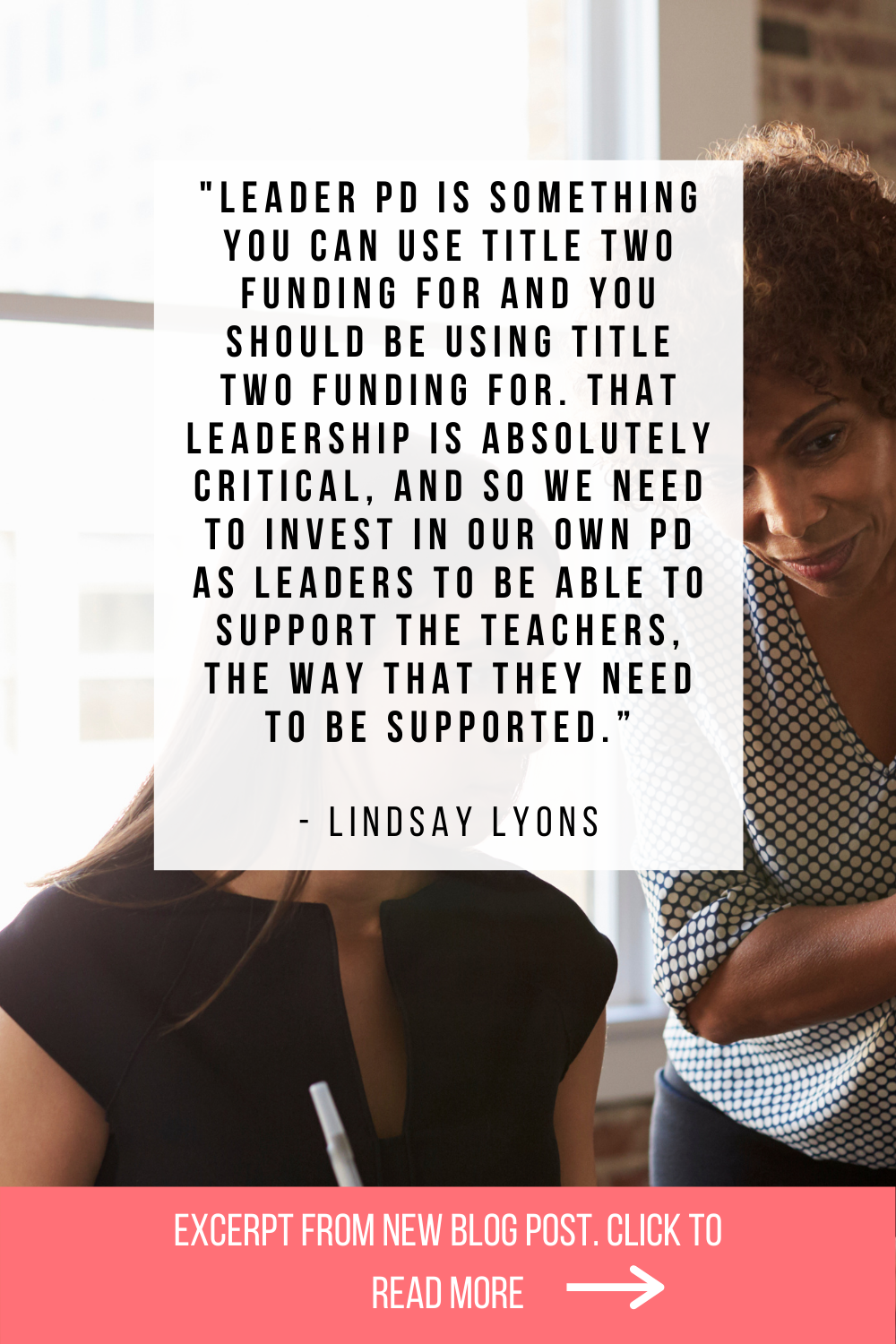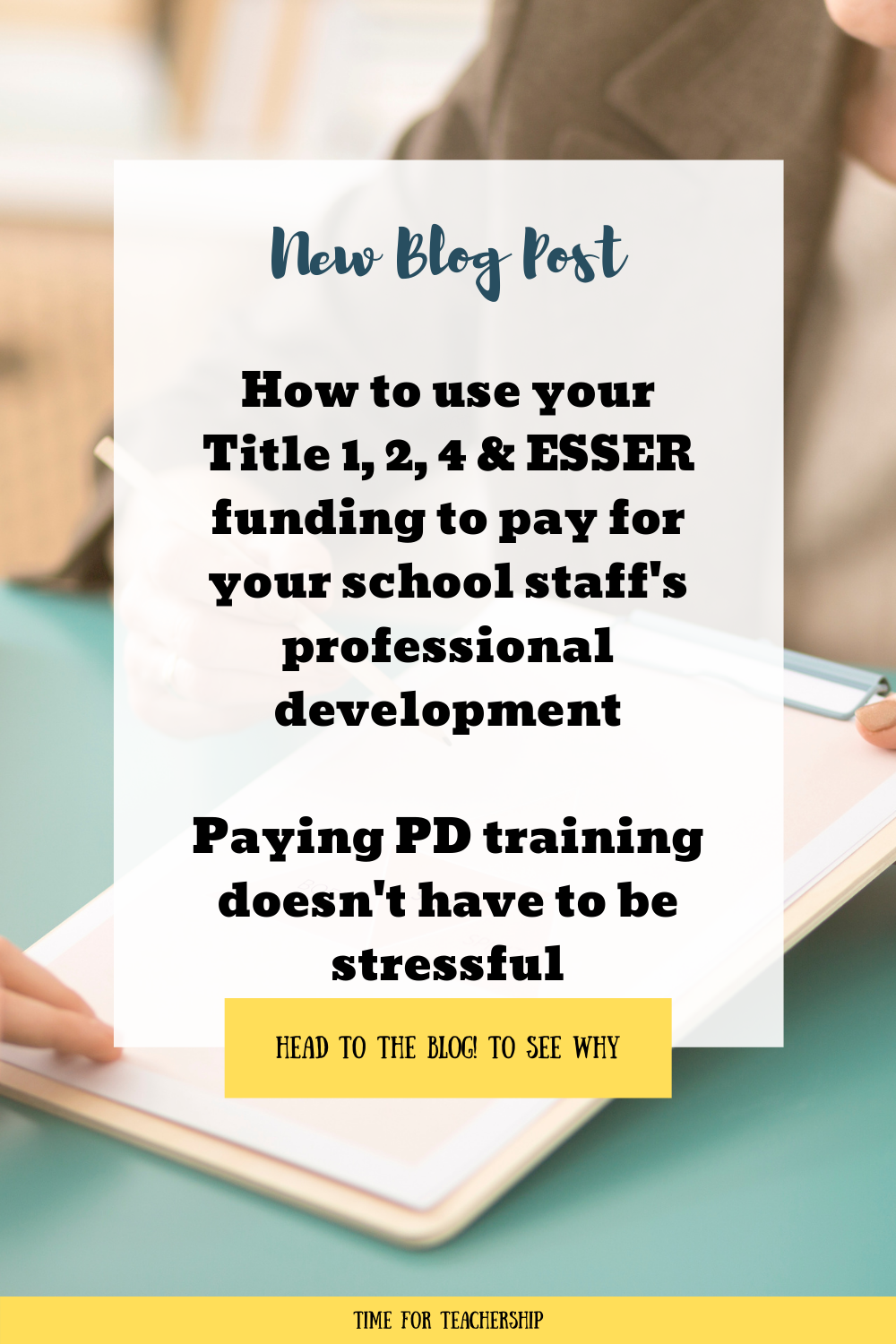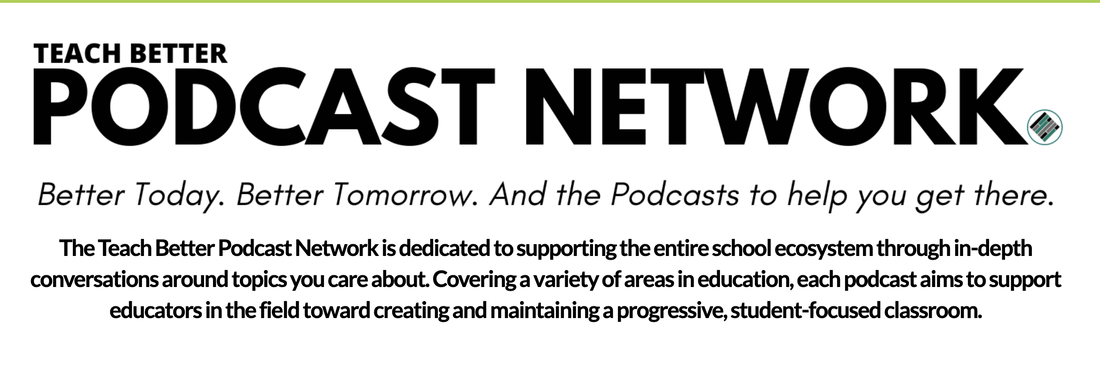|
Listen to the episode using the above player or by clicking the link to your preferred podcast platform below:
Do you ever come across an exciting resource that would be perfect for your teachers’ professional development but don’t know if you have enough in the school budget to invest in it? Today, I’m going to help you find multiple ways of funding your PD or your teachers' PD so that they can create engaging class experiences for students and you can be your best leader self. Looking at Title I If you’re a new administrator or starting to look through all of the new funding you’ve been given this year, it’s time to consider how you can get the money needed for PD. First off, Title I and Title II are the most common sources for funding professional development. Here are examples of what Title I funding can be used for:
“Providing greater decision making authority and flexibility to schools and teachers in exchange for greater responsibility for student performance.” This is where survey tools would be useful for being able to assess student/teacher/family experience. You can also use this funding to build the foundation for making shared decisions and leading in collaboration with school stakeholders. This will set your school up for sustainable success beyond one year. The research shows that this type of model which puts together multiple stakeholder viewpoints, leads us to making better decisions. Another purpose of Title I is that it should be used to elevate the quality of instruction. This could be achieved through collaboration and group coaching programs. On to Title II Title II funding can be used for:
Teacher mentoring could be a great way to get to the last point of hiring and retaining those teachers and principals with excellent skills. When we talk about studying data, I encourage you to go past the numerical data and look at perception data as well. There is definitely an emphasis on leader PD here, so use it well! Bonus: Title IV Title IV is one of the lesser known options for professional development. Just a note that this can’t be used for substitutes who aren’t attending PD that is funded through Title IV. Title IV allows uses of funds for:
“If we are in spaces, where we are trying to foster a school community that is antiracist, that advances intersection of justice, yes, we will likely decrease bullying, we will likely increase relationship building...All of these are kind of outcomes of programs that develop and facilitate generative conversations about race and anti racist policy and having an anti racist class culture. So, I think that's not explicitly named here but any programming, any professional development around this, is going to contribute to all of these outcomes that are listed in the language.” Don't forget about ESSER funding ESSER funding is the last option I’m going to name. This is relevant to COVID as it stands for Elementary and Secondary School Emergency Relief. There are actually three different subsections under this but they all have some overlap. All three types of ESSERs can be used for planning and implementing summer learning, providing mental health services and supports, and activities that address the unique needs of students who have been historically underserved by school systems. ESSER I and ESSER CARES can be used for principals and leaders to address school specific needs. This can cover many things like raising capacity for leaders to advance student achievement. ESSER II and ARP ESSER can be used to adjust learning loss among all students in all subgroups and administer high quality reliable assessments. Project based learning, what I teach in my PD programs, is one of the best ways to have students show that they are retaining the information they’re learning and getting high quality skills from it. You can use this funding for contracts in the upcoming school years so you have a sustainable runway for ongoing, quality professional development. So, invest wisely, and don't let that money go to waste! I hope this was a helpful, comprehensive guide for you on how you can pay for your teachers PD or your own. Be sure to take advantage of the unique funding that schools have received this year and last, due to COVID, so your school can thrive from that much needed PD. To continue the conversation, you can head over to our Time for Teachership Facebook group and join our community of educational visionaries. Until next time leaders, continue to think big, act brave, and be your best self.
0 Comments
Leave a Reply. |
Details
For transcripts of episodes (and the option to search for terms in transcripts), click here!
Time for Teachership is now a proud member of the...AuthorLindsay Lyons (she/her) is an educational justice coach who works with teachers and school leaders to inspire educational innovation for racial and gender justice, design curricula grounded in student voice, and build capacity for shared leadership. Lindsay taught in NYC public schools, holds a PhD in Leadership and Change, and is the founder of the educational blog and podcast, Time for Teachership. Archives
May 2024
Categories |




 RSS Feed
RSS Feed